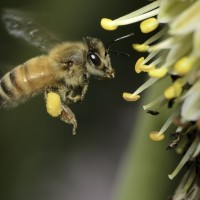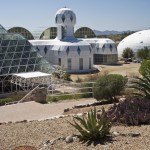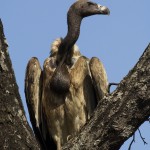Bioeconomics

Bioeconomics – Ecology And Economy – Does There Have To Be A Choice?
By Tony Juniper
To some eyes the high mountain shrub-lands that cover the high Andean slopes above the Colombian capital Bogotá look like an unproductive wasteland, and indeed that is the meaning of the word páramo first used by Spanish Conquisadors to describe this wild and remote place.
 But as I squelch through the wet grasses, breathless with altitude, I am told by Colombian conservationists just how valuable this landscape actually is. For not only does it help to reduce flooding, it also helps to purify the water used by the people and industry in Bogotá, and it does these jobs much cheaper than concrete engineered solutions would cost.
But as I squelch through the wet grasses, breathless with altitude, I am told by Colombian conservationists just how valuable this landscape actually is. For not only does it help to reduce flooding, it also helps to purify the water used by the people and industry in Bogotá, and it does these jobs much cheaper than concrete engineered solutions would cost.
The fact that wild areas like this are being appreciated for the economically valuable services they provide marks an important new departure. How best to keep those services going is a question that is rising in prominence, and fast.
For example, as countries and companies invest billions in technologies to cut emissions of carbon dioxide from fossil fuels, one study estimates that the value of the carbon capture services that could be maintained through halving the deforestation rate by 2030 are in the order of $US3.7 trillion dollars. And the wildlife in the same forests has huge value as well, seen for instance in how about 50 per cent of the United States’ annual US$640 billion pharmaceutical market is based on the genetic diversity of wild species, many of which were first found in forests. Seeing the value of the trees in the wood and fibre they supply is evidently just one small part of a far bigger picture.
The vast genetic powerhouse found in the forests and other natural systems not only brings economic benefits in carbon capture and new drugs, it is also the basis of all of our agriculture (and therefore food security) and a source of inspiration for solutions to challenges faced in (among other fields) engineering, construction and energy.

Termites have mastered low energy ventilation systems that maintain near constant temperatures in their mounds without power-hungry air-conditioning or heating. The boxfish has inspired a car body design that is stronger but which uses less steel than conventional design. A species of snake that lives in South Australia is being studied because it has found a method to very effectively collect solar heat in a cool climate. The means by which geckos walk on vertical walls has been copied to in new adhesives. This application of survival solutions that have evolved among wild species to improve conditions in the human world is called biomimicy, and it holds multi-trillion dollar potential – if only the species upon which it is based continue to exist.
The value of wildlife is not only seen in how genetic diversity can be harnessed in ways that present economic opportunities, the relationships that have evolved between different species also provide essential and highly valuable benefits.
For example, and perhaps surprisingly, wildlife helps limit the spread of disease. The cost associated with the loss of India’s vultures presents a case in point. These birds were inadvertently wiped out by residues of a veterinary drug left in the dead bodies of cattle and buffalo. The drug, which was administered to sick cattle by vets, proved lethal to the birds, even at very low doses. During the early 1990s the vulture population plummeted from about 40 million birds to just a few tens of thousands – in other words they went virtually extinct. When the birds were gone, the 12 million tonnes or so of rotting meat that they were hitherto between them eating each year became food for something else.
 The main beneficiaries of this nutritional windfall were wild dogs. Their number rocketed by about 7 million animals. More dogs meant more dog bites, and that in turn led to more rabies infections, and about 50,000 more dead people than would otherwise have been the case had the vultures still been there. It is estimated that between 1993 and 2006 the costs arising from public health and other consequences arising from the loss of vultures were in the order of US $34 billion.
The main beneficiaries of this nutritional windfall were wild dogs. Their number rocketed by about 7 million animals. More dogs meant more dog bites, and that in turn led to more rabies infections, and about 50,000 more dead people than would otherwise have been the case had the vultures still been there. It is estimated that between 1993 and 2006 the costs arising from public health and other consequences arising from the loss of vultures were in the order of US $34 billion.
Wildlife also helps to control pests. One study estimated that the annual pest-control value provided by insectivorous birds in a Jamaican coffee plantation was US $310 per hectare, while the annual per hectare value added from birds controlling pests in timber-producing forests has been put at US $1500 Great tits predating caterpillars in a Dutch orchard were found to improve the apple harvest by 50 per cent.
The services provided by animals, such as bees, doing the pollination work that underpins about one trillion dollars-worth of agricultural sales annually has been valued at $US190 billion per year. The annual spring scene in parts of south-western China of fruit farmers climbing trees with feather dusters to move pollen between blossoms says a great deal about the consequences of over-using pesticides, to the point where even the beneficial and economically essential insects are killed.
Healthy marine ecosystems are generating massive economic benefit too. The GDP value derived from marine fish stocks and the industries associated with them are about US$274 billion per year – and this could be worth another $US50 billion if the fish were managed more intelligently. And the same photosynthetic plankton that comprise the solar-powered base of marine food webs are also replenishing oxygen in the atmosphere.
At least half of the life-sustaining gas you just sucked in with your last breath was put there by plankton drifting in the sunlit layer at the surface of the seas. Those same numberless trillions of photosynthetic micro-organisms also help to seed rain clouds and each year capture about a third of the carbon dioxide released from the combustion of fossil fuels.
Set against this multi-trillion annual economic contribution by Nature is a mounting body of evidence as to the scale of degradation being caused to it. The loss of natural habitats, over-exploitation of valuable resources, such as fish and timber trees, pollution, acidification of the oceans (caused by rising atmospheric carbon dioxide) and climate change are all taking a toll on the ability of natural systems to function properly, and are leading to a mass extinction of animals and plants at a scale and pace not seen on Earth for tens of millions of years.
When it comes to how much this degradation of Nature is costing, a 2008 study by Trucost estimated that it was then about $US6.6 trillion per year (11 per cent of world GDP) and on present trends will reach $US28 trillion by 2050. By contrast, a study from a group of leading conservationists published in 2012 suggested that to meet global goals that would avert a mass extinction of species would cost around $US76 billion per year – or 0.12 per cent of annual world GDP.
Fortunately, however, some of the fundamental errors that societies have made in their valuation of Nature are being corrected. It is still early days, but progress can be seen in initiatives being taken forward by a growing number of countries, cities and companies, demonstrating through practical action how the economic value of Nature can not only be quantified, but also translated into steps that capture those values in tangible economic benefits.
In those mountains above Bogotá I saw how local and national authorities, The Nature Conservancy and Bavaria (a major beer producer) are cooperating in a project that one day might lead to the protection and restoration of the upland woodlands and shrubby grasslands that help to capture and store water. These vast natural sponges have become highly degraded, mainly by farming. If they could be restored, then considerable economic value might be gained in the fast growing built-up areas below.
This will be seen in reduced flood risk and in enhanced water storage and purification. These benefits can not only be secured with less cost than engineering but also with valuable co-benefits – including the conservation of wild species and the capture of carbon dioxide from the atmosphere in trees and soils.
And at sea effective steps are being taken to rebuild Nature’s value. One example is the halibut fishery in the US North Pacific, where a reform programme that cost the equivalent of about 3 per cent of the annual revenue earned by the industry was spent in ways that increased its productivity. Income from catching this valuable species increased from around US$50 million a year to $245 million – an improvement of 390 per cent!
In New Zealand some $US25 million was spent on better fisheries management and the national value of fisheries increased from $1.57 to $2.3 billion – an increase of 46 per cent. Norway spent about $90 million in reforming its fisheries, including putting in place a ban on discarding any fish that had been caught. This helped change fishing practices, stocks recovered, and the value of the annual catch went from $347 to $546 million. The benefits are also reflected in businesses and jobs based on fishing, including boat building and fish processing, being more secure.
These and other examples demonstrates how it is rational (and indeed essential) to see Nature as a supplier of vital services, including as provider of insurance, disease controller, waste recycler, water utility, pest manager, massive carbon capture and storage system and as the ultimate converter of solar energy into food, including fish. Political leaders, economists, investors and planners have become used to seeing Nature as supplier of resources and dump for waste. We have reached the point now, however, where it is clear that Nature is as also a supplier of vital services and our greatest ally in securing human needs indefinitely into the future, and that conclusion is based not only on a great deal of ecological science, but also economics.

